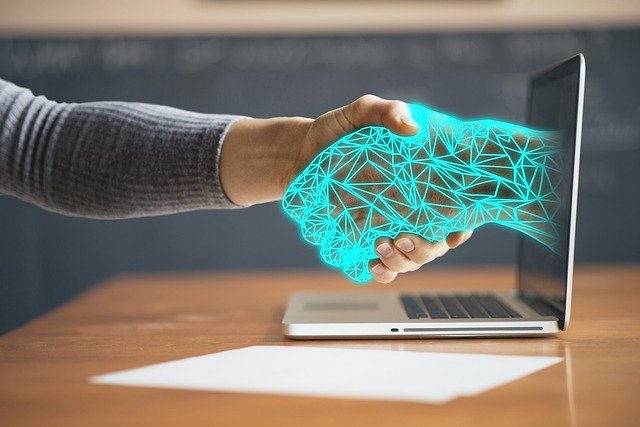A well-chosen MarTech stack can be a game-changer, streamlining workflows, automating repetitive tasks, and giving you valuable insights to boost marketing efficiency. But when things aren’t optimized, that same stack can become a costly burden. Many businesses build out complex tech stacks filled with tools they don’t fully utilize or tools that don’t integrate well, ultimately dragging down ROI instead of enhancing it.
In this article, we’ll explore the hidden ways your MarTech stack could be sabotaging your ROI and provide actionable steps to fix it, making your technology investments truly work for you.
1. The Hidden Cost of an Overcrowded MarTech Stack
More tools don’t always mean better results. Over time, companies often end up with an overcrowded MarTech stack due to impulse buys or layering new tools on top of old ones. While each tool might offer unique features, this approach leads to redundancy, wasted resources, and a lot of confusion. Every tool costs money, and when they’re not used effectively, they eat into your ROI.
For example, if you have multiple email marketing platforms or analytics tools, you’re likely paying for features that overlap. Besides the direct costs, an overcrowded stack complicates workflows, making it difficult for teams to decide which tools to use.
Action Insight: Start with a tech audit. List every tool in your stack and identify redundant or underused platforms. Determine the exact features you’re using in each tool, then eliminate or consolidate tools that overlap. This cleanup not only reduces costs but also simplifies operations, making it easier for your team to get the most out of each tool.
2. Lack of Integration: The Silent ROI Killer
A stack full of isolated tools is like having multiple languages with no translator. If your tools don’t integrate, you’re left with siloed data, broken workflows, and a lack of visibility across your marketing channels. For example, your CRM may contain valuable customer insights, but if it doesn’t communicate with your email marketing or social media platforms, those insights go underutilized.
Disjointed tools force teams to manually transfer data, increasing the risk of errors and wasting time. This lack of integration doesn’t just slow things down; it also prevents you from having a comprehensive view of your customer journey, which is essential for strategic decision-making.
Action Insight: Prioritize tools that integrate seamlessly with one another. Platforms like HubSpot, Salesforce, and Zoho offer robust integrations that connect different marketing functions. If integration isn’t an option, consider using a middleware like Zapier or Make to bridge the gap, allowing data to flow between tools smoothly.
3. Ignoring the Need for User Training
Even the most sophisticated tools are only as good as the people using them. Lack of training is a common pitfall in MarTech investments. Employees are often left to figure things out themselves, leading to low adoption, poor utilization, and wasted potential. For example, a team might only use basic features of a complex tool like Salesforce, missing out on automation and analytics that could significantly boost ROI.
Without training, teams might rely on familiar methods, like manually segmenting email lists, rather than leveraging advanced capabilities available within their tools. This lack of full tool utilization translates into poor ROI, as you’re not getting the value you paid for.
Action Insight: Invest in regular training sessions, workshops, or certifications for team members using your MarTech tools. Many platforms offer training resources; some even provide customer success reps who can offer tailored support. A small investment in training ensures that your team fully leverages each tool’s capabilities, directly impacting ROI.
4. Data Overload: When Too Much Information Hurts

MarTech tools generate huge amounts of data, and while data is valuable, too much of it can be overwhelming. Many teams struggle with data overload, trying to track every metric rather than focusing on what truly impacts ROI. For instance, instead of concentrating on conversion rates or customer acquisition cost (CAC), teams might track superficial metrics that add little value.
When there’s too much data to sift through, it becomes hard to identify actionable insights. This results in analysis paralysis, where teams are too bogged down to make quick decisions, ultimately affecting campaign agility and ROI.
Action Insight: Prioritize key performance indicators (KPIs) aligned with your business goals. For example, focus on metrics like customer lifetime value (CLTV), CAC, and conversion rates rather than every metric under the sun. Set up custom dashboards in your tools that display only the most relevant data, making it easier to stay on track and make decisions that enhance ROI.
5. High Complexity, Low Usability: Choosing Tools that Complicate Workflows
Some tools are simply too complex for the needs of a small or medium-sized team. Overly complex tools require more time to set up, maintain, and use effectively. When tools don’t match your business’s size or needs, team members may resist using them or avoid them altogether, leading to inefficiencies and wasted investment.
For example, if a small business invests in a complex enterprise-grade CRM with features they’ll never use, they’ll end up wasting resources. Instead of improving workflows, the tool becomes a burden.
Action Insight: Choose tools that match your business size, goals, and team capacity. Opt for user-friendly platforms with intuitive interfaces. Platforms like HubSpot and Mailchimp are often preferred by small and medium-sized businesses for their simplicity and effectiveness. A well-matched tool will streamline workflows, reduce training needs, and maximize ROI.
6. Not Regularly Updating or Re-Evaluating the Stack
Technology and marketing needs evolve, yet many companies hold onto outdated tools that no longer serve their purpose. Sticking with old technology or ignoring newer solutions can hold your marketing team back, as outdated tools may lack the features needed to stay competitive. Additionally, your stack may no longer be aligned with your business’s growth and goals.
For instance, a business that scaled quickly might still rely on a basic analytics tool, missing out on advanced tracking capabilities needed for a larger customer base. This gap not only impacts efficiency but also misses the mark on ROI.
Action Insight: Schedule annual or bi-annual reviews of your MarTech stack. Evaluate each tool’s relevance, usefulness, and impact on your current goals. Look into upgrades or alternatives that may better serve your business needs. Regular updates keep your stack efficient, relevant, and ROI-positive.
7. Duplicate Functionality Across Multiple Tools

Redundant tools in your stack create unnecessary expenses and complicate workflows. For instance, if you’re using multiple platforms for social media scheduling, you’re duplicating efforts and cost. Redundant functionality not only wastes money but also makes it difficult to determine which tools to use for specific tasks.
A cluttered stack with overlapping tools confuses team members and dilutes focus. Simplifying your stack by eliminating redundant tools can reduce costs and streamline workflows, ensuring everyone knows where to go for what they need.
Action Insight: Review your stack and identify tools with overlapping functions. Consolidate where possible, choosing platforms that serve multiple purposes without sacrificing quality. Streamlining in this way reduces complexity, saves on subscriptions, and boosts ROI by focusing on essential tools.
8. Neglecting Customer Support and Service Resources
Even the best tools encounter issues, and without proper support, your team can waste hours troubleshooting problems that could have been resolved quickly. If you’re not leveraging customer support resources offered by your MarTech providers, you’re missing out on assistance that can improve tool effectiveness and uptime.
For example, a campaign may stall because of a glitch in your CRM, delaying sales and impacting ROI. A quick call to customer support could resolve the issue, but without a clear support plan, problems often linger, leading to lost productivity.
Action Insight: Make customer support a priority when choosing tools. Evaluate each provider’s support options, such as live chat, dedicated reps, or help documentation. Train your team on how to contact support when needed, so they can resolve issues quickly and keep campaigns running smoothly, enhancing tool ROI.
9. Over-Reliance on Automation Without Human Oversight
Automation is powerful but dangerous when left unchecked. While it can streamline workflows, excessive reliance on automation without human oversight can lead to impersonal customer interactions, repetitive messaging, and even errors that damage customer relationships. For example, automated email sequences may fail to adapt to nuanced customer behaviors, creating a disconnect.
When used wisely, automation should enhance, not replace, the personal touch. Without a human touchpoint, campaigns risk losing authenticity and relevance, which ultimately harms conversion rates and ROI.
Action Insight: Strike a balance by pairing automation with manual oversight. Regularly review automated sequences and personalize them based on customer behavior. Simple manual checks ensure your marketing stays human-centered, maintaining trust and increasing engagement for better ROI.
10. Failing to Set Clear ROI Benchmarks for Each Tool
Without clear benchmarks, it’s impossible to measure whether your MarTech tools are delivering on their promise. Each tool should have specific goals and KPIs to determine its effectiveness, such as lead generation, engagement rates, or conversion lift. Lacking these benchmarks leads to vague results, making it hard to gauge real impact and make informed decisions.
For example, if you’re using a social listening tool, set a benchmark for increased engagement or improved customer sentiment. Without this, you might keep the tool running without understanding its contribution to your overall strategy.
Action Insight: Define clear ROI benchmarks for each tool. Track metrics that directly reflect each tool’s purpose and value to your campaigns. This lets you evaluate tool performance objectively, keeping only the tools that actively contribute to your marketing goals.
11. Neglecting Privacy and Compliance Requirements
Data privacy is essential, and with evolving regulations like GDPR and CCPA, it’s more important than ever. If your MarTech stack doesn’t prioritize compliance, you risk facing fines, losing customer trust, and damaging your brand reputation. Privacy issues directly impact ROI, as non-compliance can result in expensive penalties and loss of customer loyalty.
For example, if your email marketing tool doesn’t comply with GDPR, you may unknowingly breach privacy regulations, risking costly repercussions. A compliant stack protects your brand and fosters trust with your audience, improving long-term ROI.
Action Insight: Ensure every tool in your MarTech stack is compliant with relevant privacy laws. Review each platform’s data handling and privacy policies, and conduct regular audits. Staying compliant avoids legal risks and builds trust, which supports sustainable ROI growth.

Related: Check out our free tools:

12. Lack of Collaboration Features in the Stack
Effective marketing requires teamwork, and a MarTech stack lacking collaboration features can lead to disjointed efforts and missed opportunities. When teams can’t easily collaborate within a tool, it slows down workflows and reduces efficiency. Tools with shared dashboards, commenting, and task assignment capabilities keep everyone on the same page and improve campaign execution.
For instance, without collaboration features, marketers might struggle to share insights from analytics with content creators, delaying content optimization and lowering campaign performance.
Action Insight: Choose tools that facilitate collaboration. Look for features like shared workspaces, real-time updates, and integrated communication. Collaborative tools empower teams to work together smoothly, speeding up decision-making and maximizing each tool’s impact on ROI.
13. Regularly Re-Evaluating for Scalability and Future Growth
As your business grows, so do your marketing needs. A MarTech stack that worked for a small team may fall short for a larger, more dynamic organization. Tools that don’t scale effectively can limit your team’s productivity, resulting in inefficiencies and missed opportunities. When your tech stack doesn’t grow alongside your business, you’re likely to experience diminishing returns and see a drop in ROI.
For instance, a CRM that caps its database size or lacks robust analytics may have served you well initially, but as your customer base grows, you’ll need more advanced functionality to maintain efficiency and insight. Regularly re-evaluating your MarTech stack for scalability ensures that your tools continue to support your team’s evolving needs without incurring excessive costs or complexity.
Action Insight: Conduct scalability assessments during your annual MarTech audits. Identify tools that may soon be outdated or unable to keep up with growth. Proactively upgrade or replace tools that show signs of strain to ensure your stack is future-proof and capable of driving long-term ROI.
14. Leveraging AI and Machine Learning for Enhanced Efficiency

Artificial intelligence (AI) and machine learning can enhance your MarTech stack by automating complex tasks, optimizing campaigns in real-time, and generating data-driven insights that would be time-consuming to discover manually. AI-powered tools can help with predictive analytics, lead scoring, personalized recommendations, and even sentiment analysis, all of which contribute to better-targeted marketing and improved ROI.
For example, an AI-driven recommendation engine can suggest products to customers based on their browsing and purchase history, increasing the likelihood of conversion. Or, predictive analytics can help you anticipate customer behaviors, allowing you to tailor campaigns and improve engagement.
Action Insight: Look for AI-enabled features in your current tools or consider adding AI-driven tools to your stack. Identify areas where AI can simplify tasks, like customer segmentation, content recommendations, or campaign optimization. By strategically integrating AI, you can boost efficiency, reduce manual work, and enhance ROI through more precise, data-driven marketing.
15. Establishing Clear Onboarding Processes for New Tools
Introducing new tools to your MarTech stack without a structured onboarding process can lead to confusion, low adoption rates, and poor utilization, which ultimately undermines ROI. When a new tool is added, it’s essential to provide a clear onboarding plan to ensure your team understands its capabilities, benefits, and best practices. An efficient onboarding process empowers your team to start using the tool effectively from day one, minimizing the learning curve.
A well-structured onboarding process includes initial training, usage guidelines, and ongoing support resources. For instance, providing a user manual, tutorials, and a Q&A session with the tool’s provider can accelerate team proficiency.
Action Insight: Develop a standard onboarding checklist for new MarTech tools. Include steps like introductory training, documentation, and a clear explanation of how the tool fits into existing workflows. Consistent onboarding ensures that new tools are integrated smoothly and contribute to ROI faster.
16. Using Data Analytics to Continuously Optimize Campaigns
The best MarTech stacks don’t just support campaigns; they actively enhance them through continuous optimization. Data analytics tools are crucial for monitoring performance, identifying trends, and pinpointing areas of improvement. When data is harnessed effectively, it empowers marketers to refine strategies, allocate budgets wisely, and make quick adjustments that maximize ROI.
Instead of running campaigns on autopilot, leverage data analytics to track results in real-time. For example, if a social media ad is underperforming while your email campaign is driving conversions, data insights allow you to reallocate funds to the more successful channel.
Action Insight: Set up performance dashboards for each tool in your stack to monitor campaigns in real-time. Use these insights to make on-the-fly adjustments, reallocating resources to the best-performing areas. Consistently optimizing based on data ensures that your stack remains agile and ROI-focused.
17. Aligning Your MarTech Stack with Customer-Centric Strategies
Modern marketing success hinges on customer-centricity—understanding and meeting the needs of your customers in a personalized, meaningful way. If your MarTech stack doesn’t support a customer-centric approach, you may struggle to build strong customer relationships, which impacts retention and ROI. Tools that help you gather, segment, and analyze customer data are essential for tailoring your messaging and delivering the personalized experiences customers expect.
For instance, using a CRM that provides detailed insights into customer behavior and preferences enables you to send more relevant, targeted communications. Similarly, marketing automation that adapts to user behavior helps maintain engagement over time.
Action Insight: Ensure your MarTech stack includes customer-centric tools like CRM, customer journey mapping, and personalization engines. Regularly assess how each tool contributes to delivering a personalized experience. By keeping your stack aligned with customer needs, you foster loyalty, drive engagement, and support sustainable ROI.
18. Focusing on Agility to Respond to Market Changes

Marketing trends and customer expectations change rapidly, and your MarTech stack needs to be agile enough to keep up. If your stack is rigid or difficult to adapt, it will be challenging to respond to new opportunities, competitor actions, or shifts in customer preferences. Agility in your MarTech stack allows you to experiment with new strategies, pivot quickly, and optimize campaigns based on emerging trends.
For example, if a new social platform gains popularity with your target audience, an agile stack enables you to incorporate that platform quickly. Flexibility and adaptability prevent missed opportunities and keep your strategy relevant, positively impacting ROI.
Action Insight: Prioritize tools that allow for easy customization and scalability. Use modular tools that can be easily integrated or removed as your needs evolve. Keeping your MarTech stack flexible lets you stay responsive and adapt to changes, maximizing your ability to capture value in a dynamic market.
19. Regularly Reviewing ROI for Each Tool
Finally, it’s essential to continuously review the ROI of each tool in your stack. Just because a tool once delivered value doesn’t mean it always will. By consistently evaluating each tool’s contribution to revenue, efficiency, and overall marketing effectiveness, you can make data-driven decisions about whether to keep, replace, or eliminate specific tools.
For instance, if an analytics tool no longer offers unique insights that can’t be found elsewhere in your stack, it may be time to consider alternatives. Keeping an eye on each tool’s performance ensures that you’re only investing in platforms that deliver measurable ROI.
Action Insight: Conduct quarterly ROI reviews for each tool in your MarTech stack. Assess metrics like productivity gains, contribution to conversions, and revenue impact. Regular reviews allow you to keep your stack lean, cost-effective, and performance-driven.
20. Building a Culture of Continuous Improvement Around MarTech
Finally, the most successful MarTech stacks are built on a foundation of continuous improvement. Encourage a culture where your team is empowered to question, suggest, and test new tools or strategies. When your team feels invested in the MarTech stack’s success, they’re more likely to adopt tools fully, offer feedback, and identify ways to improve efficiency and impact. A collaborative approach keeps your MarTech stack agile, relevant, and aligned with your goals.
For example, invite team members to share insights about what’s working and what isn’t during regular team meetings. This collective input can highlight areas for improvement and create a shared commitment to optimizing your tech stack.
Action Insight: Create a collaborative feedback loop where team members can share MarTech insights, challenges, and suggestions. Regularly update the stack based on team input and evolving goals. By fostering a culture of continuous improvement, you ensure that your MarTech stack remains a powerful, ROI-boosting asset.
Final Thoughts: Transforming Your MarTech Stack Into an ROI-Boosting Engine
Your MarTech stack has the potential to be a cornerstone of your marketing success. But for it to drive ROI, it needs to be efficient, customer-centric, scalable, and regularly reviewed. By eliminating redundant tools, investing in training, and fostering a culture of continuous improvement, you can create a streamlined stack that supports agile decision-making, drives high-quality customer engagement, and ultimately boosts revenue.
A successful MarTech stack isn’t just about the tools; it’s about how well they’re integrated, used, and optimized to meet business goals. By following the strategies outlined here, you’ll move closer to a MarTech ecosystem that’s not just a collection of tools but a finely-tuned machine that enhances every aspect of your marketing, from personalization to automation to analytics.
Make your MarTech stack work for you, not against you. With regular evaluation, smart consolidation, and a focus on both usability and scalability, you’ll ensure that each tool earns its keep, contributing directly to a leaner, more profitable, and strategically aligned marketing approach that consistently delivers on ROI.
READ NEXT:
- Best Digital Marketing Agency In Los Angeles, California
- Best Digital Marketing Agency In San Jose, California
- Best Digital Marketing Agency In Stockton, California
- Best Digital Marketing Agency In Oakland, California
- Best Digital Marketing Agency In Santa Ana, California
- Best Digital Marketing Agency In San Francisco, California






















Comments are closed.